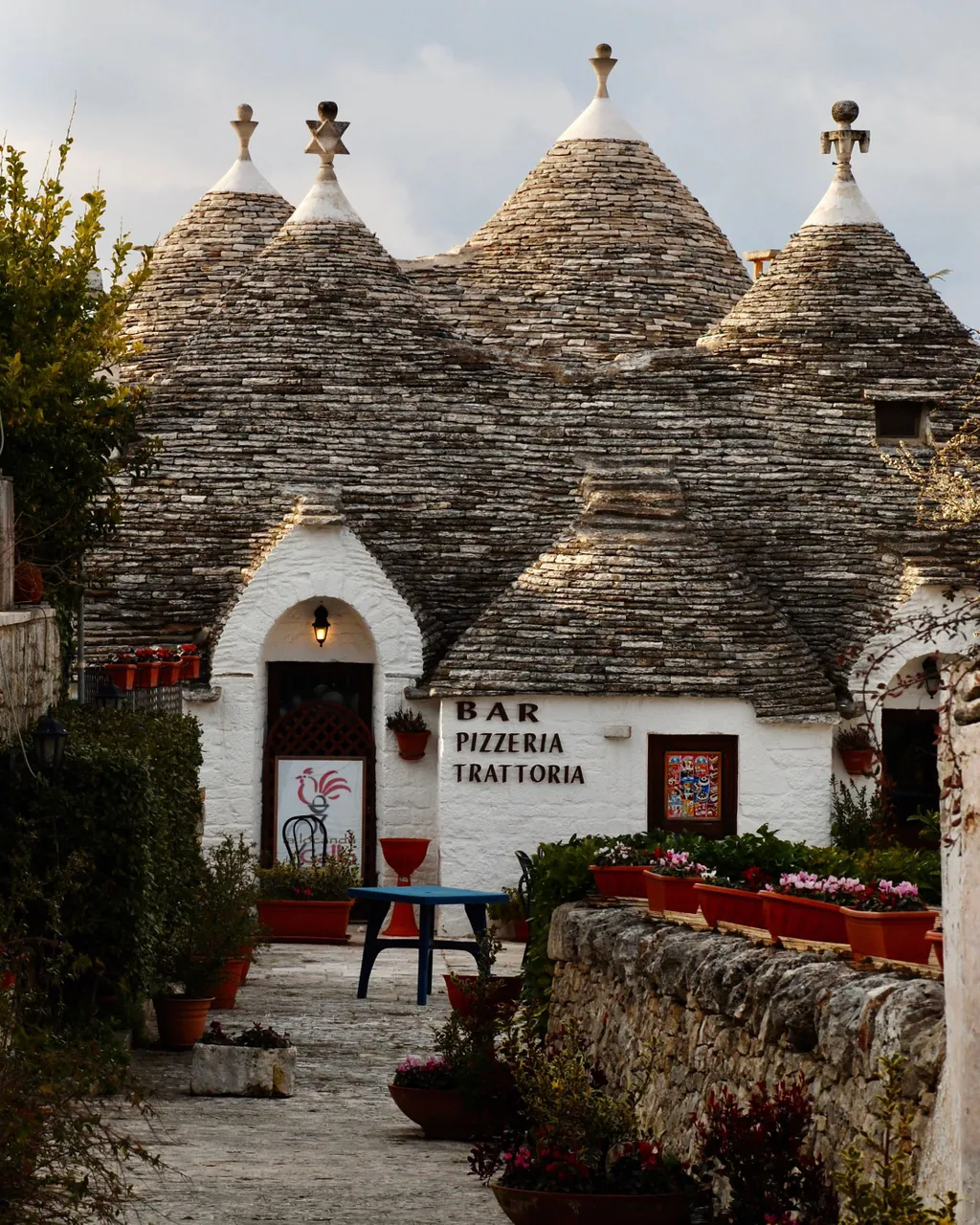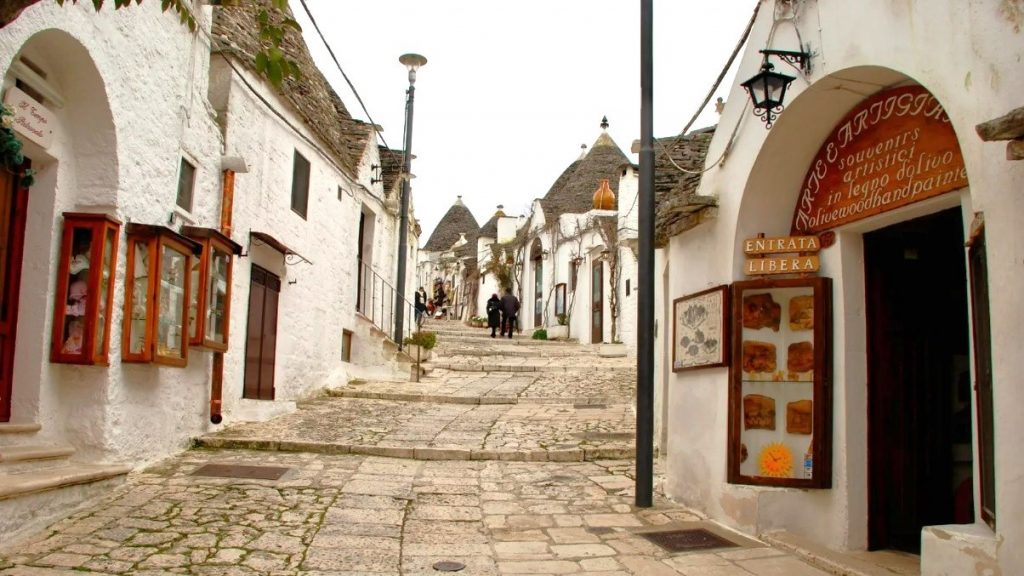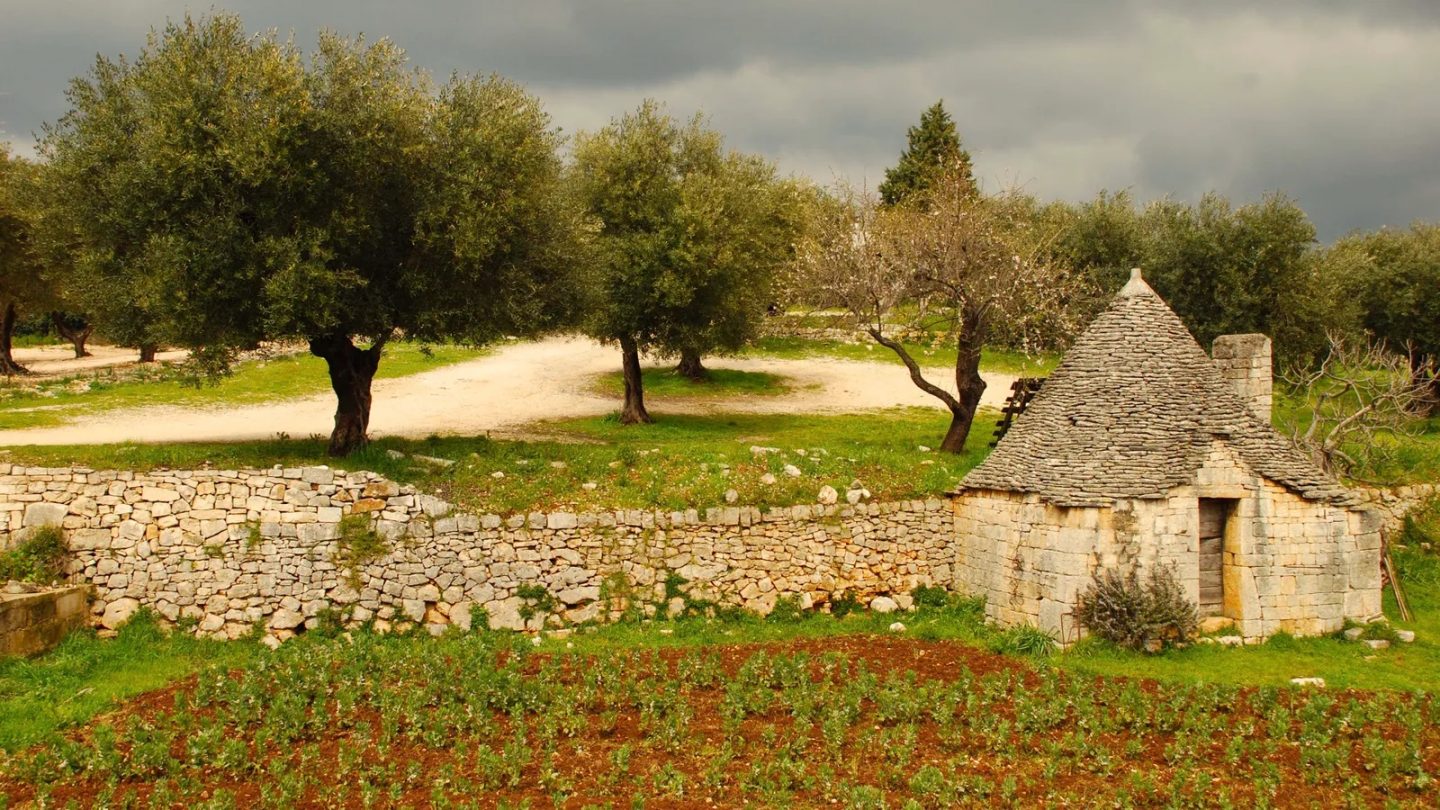Today, the trulli of Alberobello are a Unesco World Heritage site, although many people have never heard of these ingenious structures.

BBC by Victoria Abbott Riccardi – Today, the trulli of Alberobello are a Unesco World Heritage site, although many people have never heard of these ingenious structures.
ifty-six kilometres south of the Puglian port city of Bari, on the heel of Italy’s boot, I could see several small stone huts with conical rock-covered roofs scattered among the olive trees on both sides of the road. Reminiscent of teepees or tiny forts, these structures were unlike anything I’d ever encountered.
While Puglia is famed for its buttery green olive oil, fruity red wines and orecchiette pasta with broccoli rabe, it’s also known for these ancient architectural wonders called trulli (singular, trullo). Found throughout the Itria Valley – where there are approximately 50,000 in total – trulli are particularly abundant in the town of Alberobello, where roughly 1,500 of them pack the districts of Rione Monti and Rione Aja Piccola. Some trulli stand alone, while others are clustered together along the town’s cobbled lanes transformed into residences, shops, restaurants and even boutique hotels. Today, the trulli of Alberobello are a Unesco World Heritage site, although many people outside Italy have never heard of these conical structures.
“Trulli are products of the Messapian culture and are present in the regions of Puglia that have known that cultural influence,” said Annunziata Berrino, author of a book on the trulli of Alberobello and a professor of contemporary history at the University of Naples Federico II.



